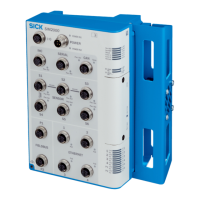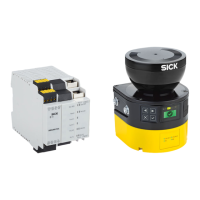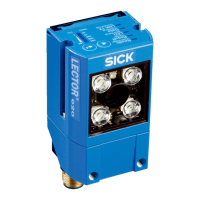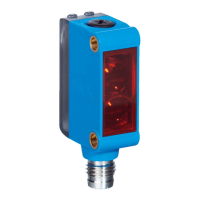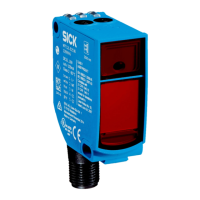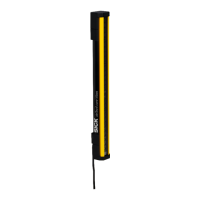4.3.10.1 Protective field
For hazardous area protection, the minimum distance typically determines the geome‐
t
ry and location of the protective field.
If you define a number of monitoring cases with different protective fields, you must
calculate the protective field size separately for each protective field used.
For hazardous area protection, an object resolution of Body is suitable in most cases.
4.3.10.2 Calculation example for the minimum distance
Overview
T
he following examples show the calculation of the minimum distance S for an
approach orthogonal or parallel to the optical axis (Z-axis) of the camera sensor. The
calculation is performed in accordance with ISO 13855 and the specific specifications
of the camera sensor. A different calculation may be required depending on the appli‐
cation and the ambient conditions, for example when approaching the optical axis of
the camera sensor at any angle.
Minimum distance S with orthogonal approach to the optical axis
S = 1,600mm/s × T + C
W
here:
•
S =minimum distance, in millimeters (mm)
•
T = stopping/run-down time for the entire system, in seconds (s)
(Response time of the device + machine’s stopping/run-down time, including
r
esponse time of the machine’s control system and signal propagation time)
•
C = supplement in millime
ters (mm)
The reach/approach speed is already included in the formula.
Table 8: Supplement C with orthogonal approach to the optical axis, hazardous area protection
Object resolution
H
and
Object resolution
Arm
Object resolution
Leg
Object resolution
Body
160mm 300mm 350mm 550mm
850mm when usin
g
Increased scanning range
mode
Minimum distance S with parallel approach to the optical axis
S = 1,600mm/s × T + Tz + C
W
here:
•
S =minimum distance, in millimeters (mm)
•
T = stopping/run-down time for the entire system, in seconds (s)
(Response time of the device + machine’s stopping/run-down time, including
r
esponse time of the machine’s control system and signal propagation time)
•
T
Z = tolerance zone of the device
•
C = supplement in millimeters (mm)
The reach/approach speed is already included in the formula.
Table 9: Supplement C with parallel approach to the optical axis, hazardous area protection
Object resolution
H
and
Object resolution
Arm
Object resolution
Leg
Object resolution
Body
160mm 850mm 850mm 850mm
4 PROJECT PLANNING
30
O P E R A T I N G I N S T R U C T I O N S | safeVisionary2 8025919/1I9E/2023-01-09 | SICK
Subject to change without notice
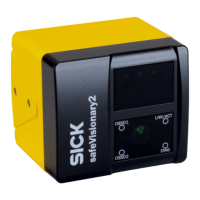
